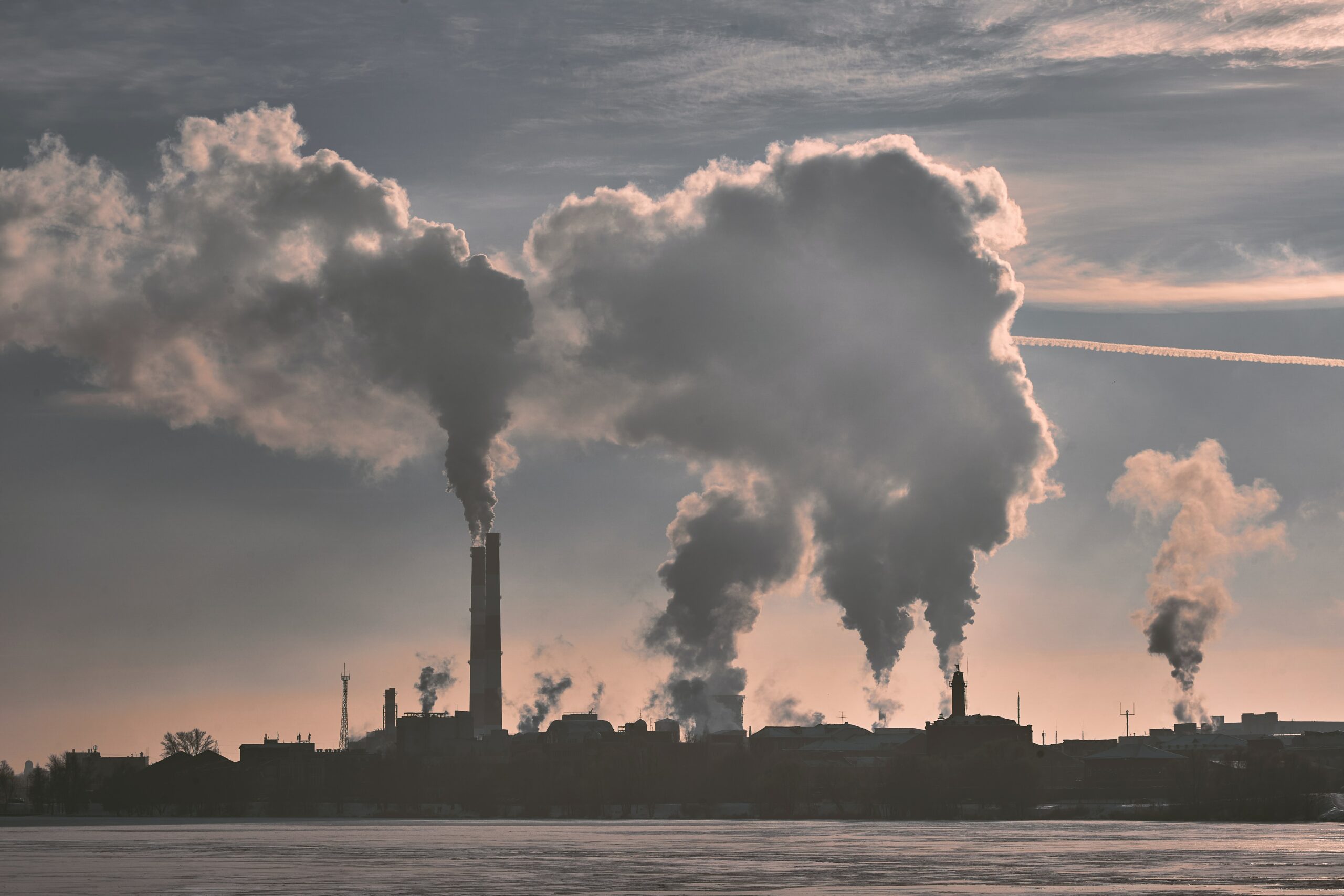
At the end of 2006, sulphur dioxide (SO₂) pollution in China peaked at just over 38 million tonnes per year. By 2019, this had been cut to around 12 million tonnes – less than a third. Previous forecasts for SO₂ emissions in China, based on old assumptions, projected that levels would not fall this much until 2030 at the earliest.
Although air pollution in China – and the wider world – is still a major health and environmental hazard, the rapid reduction in SO₂ emissions will have contributed to improvements in air quality across China by cutting the amount of particulate matter (PM) and aerosols in the air, as well as aiding improvements in soil and water quality.
These impressive reductions were made possible due to a mix of command-and-control policies from the Chinese Communist Party (CPC), from tackling emissions at source to fining polluters, and a massive shake up of the regulatory system. Understanding how this played out, and what conditions were required, could provide some evidence-based hope for tackling other sources of pollution and stimulating rapid transitions elsewhere.
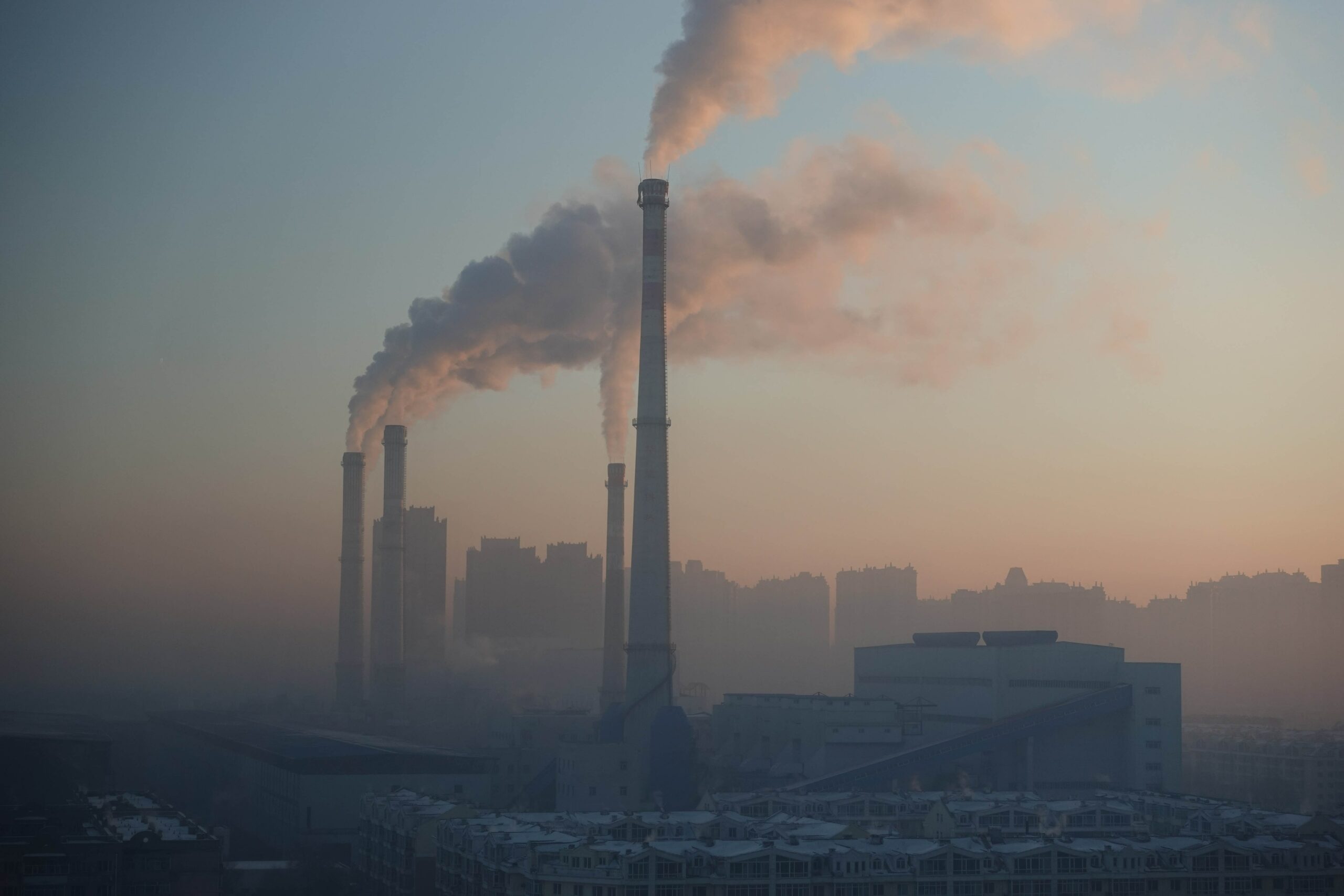
The largest source of SO₂ in the atmosphere is from the burning of fossil fuels like coal and oil, but it is also released in other industrial processes, such as extracting metal ore or steel making. Once in the atmosphere, SO₂ combines with water to form sulphuric acid, the main component of acid rain. In China, acid rain has long been an endemic environmental problem, spoiling crops, driving deforestation, and threatening cultural sites like the 1,200-year old Leshan Buddha.
SO₂ is also a major contributor to air pollution and haze, which is a blight for many cities worldwide. Across China, air pollution and smog have wreaked havoc on public health, despite improvements. In 2019, approximately 1.4 million premature deaths in China were attributed to air pollution. According to another study, over 30 million adult deaths in China since 2000 can be attributed to air pollution.
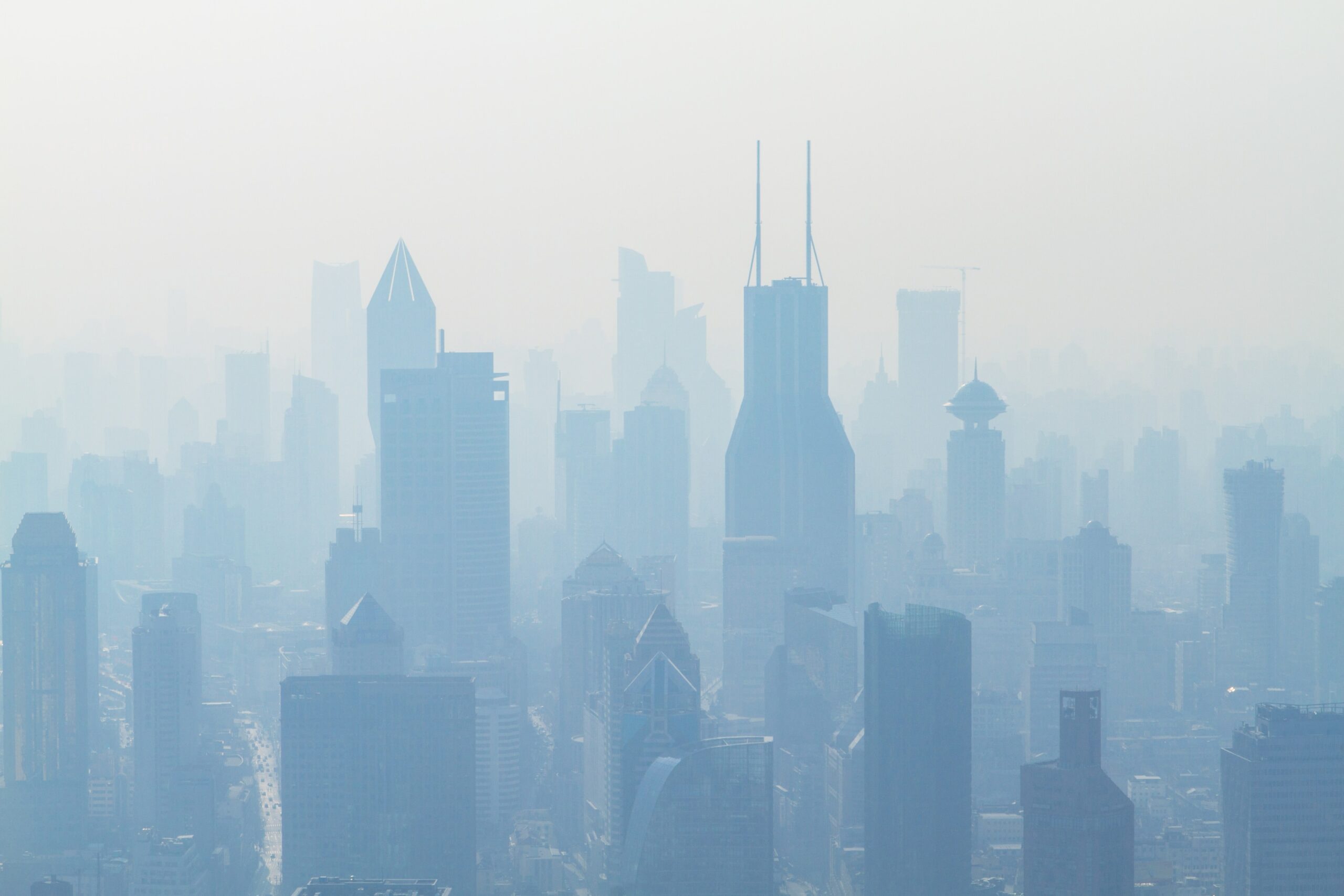
As an air pollutant, SO₂’s impacts on public health are extensive. One study exploring short term exposure to sulphur dioxide across 48 Chinese cities between 2013 and 2017 found a strong correlation between SO₂ exposure and chronic obstructive pulmonary disease (COPD), which refers to a group of diseases that cause breathing-related problems. Another study, from 2016, highlights that, on average, sulphur dioxide emissions per second increase the number of deaths caused by lung cancer and respiratory diseases by 0.217 and 1.543, respectively, across Chinese cities.
The health impacts of air pollution are not just felt physically; they are mental too. When fine particulate matter permeates your heart or brain, it has been shown to damage your cognitive skills. Recent studies have continually linked air pollution with cognitive impairment and decline, with some studies highlighting the connection between prolonged exposure to air pollution and the increased risk of developing dementia and Alzheimer’s. Some studies even highlight how air pollution reduces our ability to think and communicate verbally. This makes air pollution both an environmental and a public health emergency.
By the end of the first decade of the 2000s, China’s role as a factory for the world meant it was the world’s largest consumer of energy and coal, the biggest emitter of both CO₂ and SO₂, and had the world’s largest car market. The environmental and social costs of these developments were as historically unprecedented as China’s economic rise itself. Images of smog-filled cities, with their towering skyscrapers barely visible through the haze, quickly spread around the globe. The international press quickly dubbed this the “smogpocaplypse” and public outrage in cities such as Beijing began to boil over, with residents – and particularly parents – demanding greater levels of public information on air pollution and immediate government action.
In the summer of 2008, the eyes of the world were firmly fixed on Beijing for the Olympic Games. Concerns over air pollution in the Chinese capital were raised by both international governments, global environmental watchdogs, the athletes that were set to compete, and local citizens. In response to this, the Chinese government immediately halted construction projects in Beijing, shuttered hundreds of factories and coal-fired power plants, while also pushing over 300,000 high-emissions vehicles off the roads.
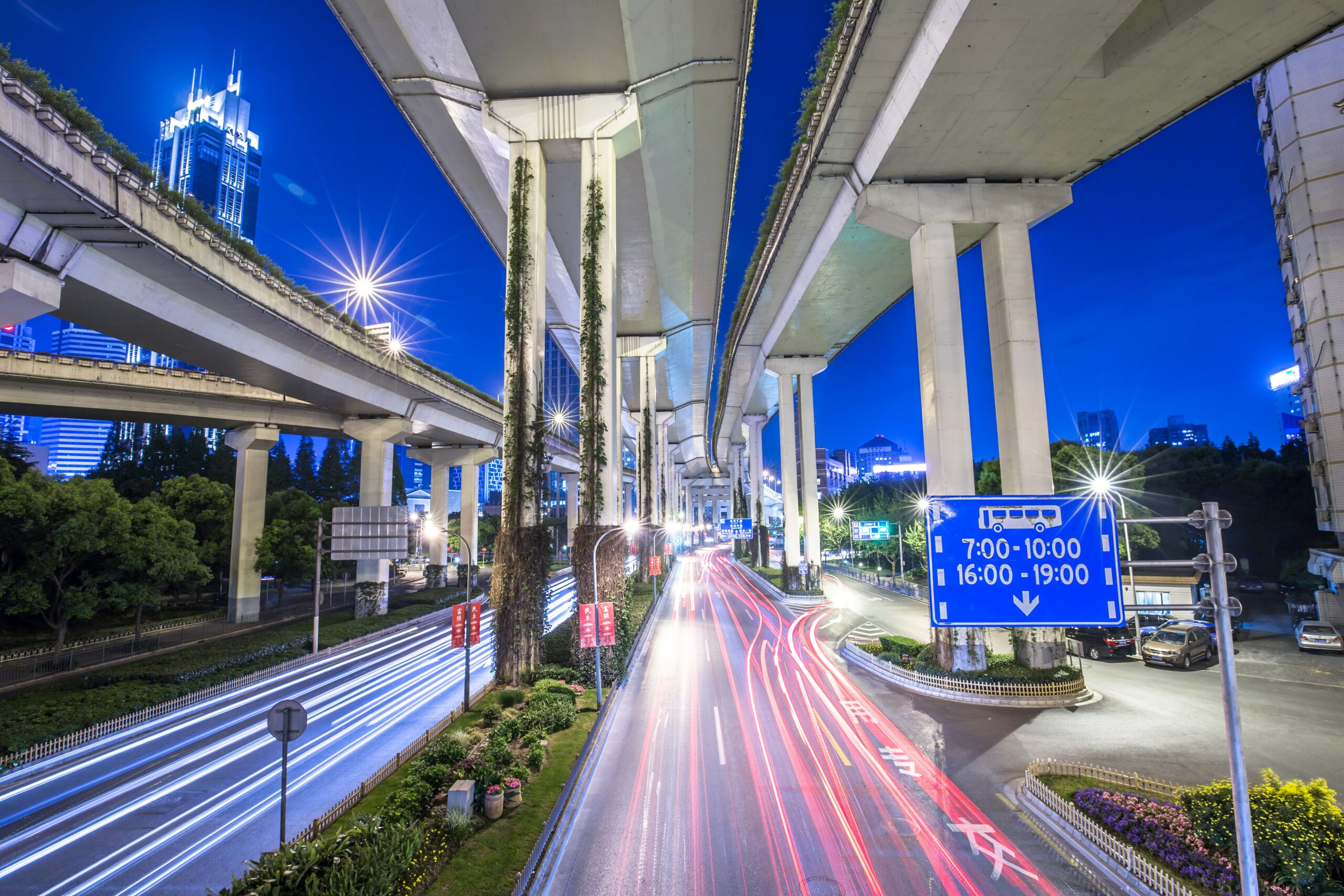
These top-down efforts cut air pollution by 30 percent and led to immediate health improvements, with the city experiencing a drop in the number of deaths due to cardio and respiratory diseases. Although air pollution quickly rebounded after the games concluded, much to the dismay of Chinese citizens, the International Olympic Committee hailed China’s efforts to clear the air. Still, to this day – both within China and outside it – the Beijing Olympics are seen as a step change moment for China’s battle against air pollution, with a raft of measures being introduced in the years that followed.
The visceral social, economic, and environmental impacts of air pollution, as well as the simmering outcry from Chinese citizens, caused the ruling CPC to reassess its priorities for development. Following a severe haze that engulfed many Chinese provinces and cities in 2013, Premier Li Keqiang used his opening speech at the annual People’s Congress in 2014 to openly declare a “war on pollution”, remarking that sulphur dioxide-fuelled smog was nature’s “warning against inefficient and blind development”, and that China would fight it with “iron fists”.
The war-like rhetoric from the CPC was translated into a raft of regulatory changes and command-and-control policies that swept over the breadth and depth of the Chinese economy as part of the China National Action Plan on Air Pollution Prevention and Control. These measures include:
Once introduced, these measures had an immediate impact on sulphur dioxide emissions and broader climate governance throughout China.
It might have been the 2008 Olympics that drew attention to the scale of China’s air pollution, but it was public outcry and protest from Chinese citizens that pushed it up the domestic policy agenda.
Air pollution is an intersectional issue: it disproportionately impacts the elderly and children, with concerned parents mobilising en masse to demand concrete action from both local and national government. Parents forming a political force has a track record in China too, with the milk-powder scandal of 2008 mobilising parents against government and corporate negligence that saw more than 300,000 babies fall ill due to contaminated milk. Similar protests after a deadly earthquake in 2008, where a school collapsed and 9,000 children died, saw a number of Chinese parents arrested.
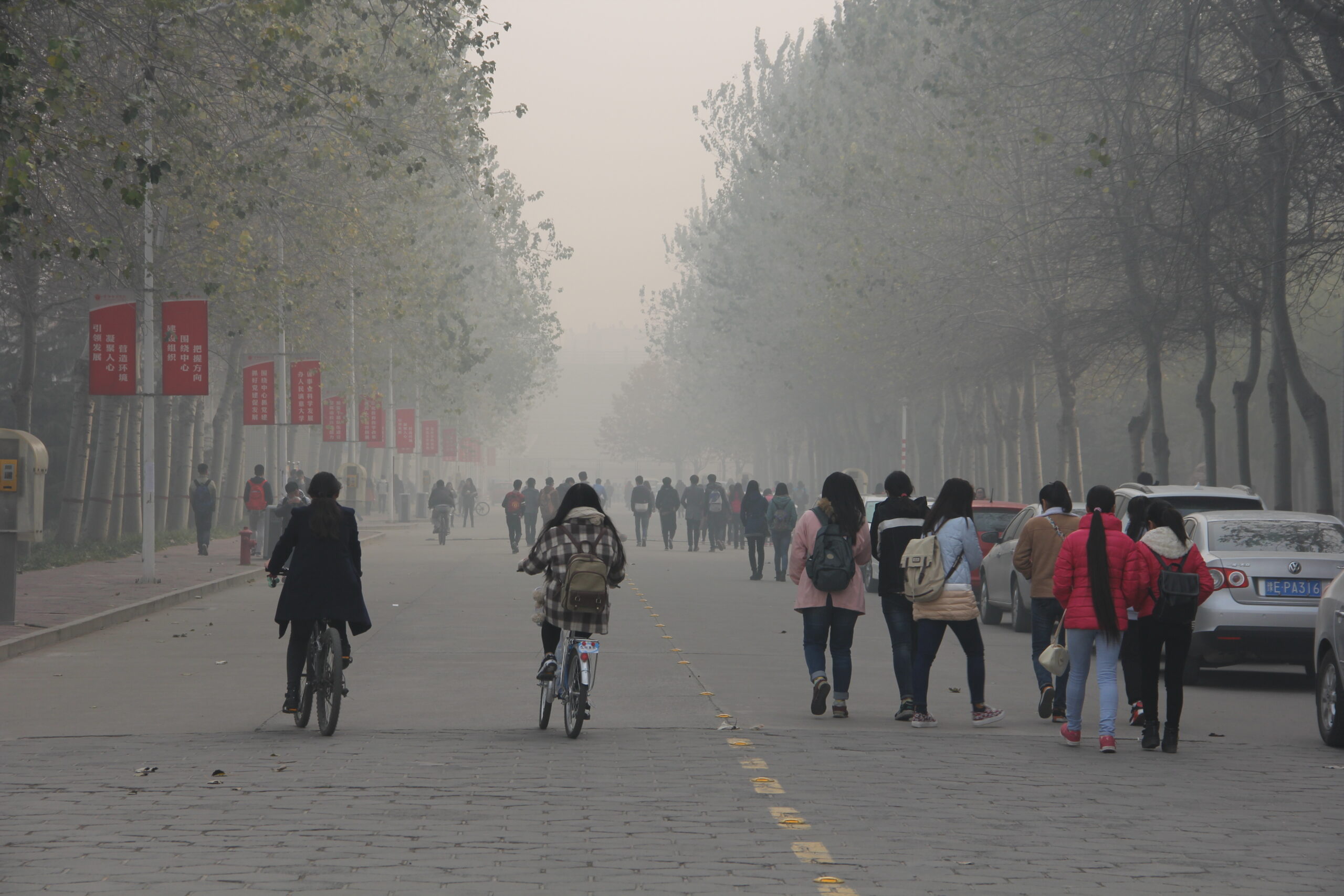
Long-term exposure to pollutants like SO₂ is also a symptom of rising inequality in China, which has contributed to its rise up the policy agenda. One study examining health inequalities across 31 Chinese provinces found a strong correlation between income inequality, exposure to air pollution, and increased instances of tuberculosis mortality. A more recent study supplements these findings by arguing that the significance of the adverse health impacts of air pollution is income-based.
Richer Chinese citizens tend to spend more time inside and have greater resources and capacity to purchase air filtration devices, which is a privilege poorer citizens cannot afford. The cognitive and educational impacts of air pollution, as well as the reductions in human and physical capital caused by prolonged exposure, may create a vicious cycle where air pollution further entrenches inequality and poverty.
All of these factors have made tackling air pollution a keystone policy issue that requires Ding Ceng She Ji, or “top design strategy”. Controlling air pollution through policy has been used as a way of integrating environmental, climate, energy, and regional development policies that have been used by the Chinese state to reconfigure and reshape whole industries and provincial economies.
In China, top-down policies can be introduced unilaterally with the state insulated from both special interest lobbying and democratic challenge. Although the public outcry over air quality was tangible, the “war on pollution” is typical of China’s campaigning style when it comes to regulation, where responsive measures and regulations are introduced rapidly to supplement regular governance.
The 2008 Olympics acting as a point of departure is a case in point. While there are glaring questions about the legitimacy of such actions, China’s ability to rapidly cut air pollution – and in particular SO₂ – is evidence of the speed at which state capacity can be mobilised to tackle an environmental issue. This scale and style of state mobilisation is also visible in the rates of renewable generation being deployed throughout China.
The aim of total control over sulphur dioxide emissions is another reflection of state power. The regulatory changes made to tackle SO₂ point to both a decentralisation and a re-centralisation of state power. From 2014 onwards, the management of air quality was seen as a technocratic and administrative task that fell on provincial government, alongside other developmental aims. This is distinct from other nations’ efforts to cut air pollution, which are often based on clean air being a public good or a human right. The proliferation of monitoring devices, and the gathering of data, shows how state power was first decentralised for matters of practical implementation and then re-centralised through these regulatory changes and amid scandals over misreporting. Still today, there is evidence of misreporting of air quality data at the national level, suggesting that while Chinese air quality data is indeed useful, it should be approached with caution.

The China National Action Plan on Air Pollution Prevention and Control took “total control” of SO₂ emissions and targeted the sources of them, from power plants to big industrial boilers. Outdated technologies were prematurely phased-out alongside older vehicles, and these targets were subsequently enshrined in the ruling party’s Five Year Plans. Industrial polluters that could not reduce sulphur dioxide emissions faced sky-high fines. The regulatory changes also sought to strengthen collaboration and coordination between the central government and provincial cadres. Local provincial targets were set and local state bureaucrats were graded on their success in achieving them through a weighted system that prioritised air quality.
While local accountability of air quality objectives allowed citizens to lay responsibility at provincial leaders’ feet, national-level monitoring and unified standards were essential to putting China on a war footing against air pollution. The number of nationally mandated air quality monitoring stations throughout China almost tripled between 2012 and 2020, from 661 to 1,800. In addition to this, thousands of monitoring stations were built, managed, and funded by provincial governments.
Given that more than 90% of people alive today are breathing unsafe air, it is a shocking failure that only half of the world’s governments produce air quality data. Once gathered, data can then be used to trace sources and set standards. China used this mountain of actionable monitoring data to update emissions standards for power plants, boilers, and vehicles, as well as fuel quality standards.
The law was also given extra teeth to penalise individuals and businesses that were alleged to be causing “serious cases of environmental damage”. In 2014 alone, over 8,000 suspects were arrested in more than 2,000 individual environmental criminal actions – twice the number of cases brought in the preceding decade. The criteria for Chinese citizens to qualify for litigation were also revised, with many now seemingly able to file cases against the provincial governments and businesses using evidence from the publicly available air quality data. Yet the reality on the ground is far from what is enshrined in the regulations, with citizen lawyers reportedly detained and tortured, as well as eminent Chinese judges dismissing notions of individual judicial rights as Western notions.
Air pollution remains a pervasive issue in China – especially in its densely populated cities. The regulatory changes from 2014 onwards had a substantial impact. However, there are very real concerns about the resurgence of pollutants in the near-term as China seeks to expand coal power generation to avoid the power-cuts and shortages experienced in 2021.